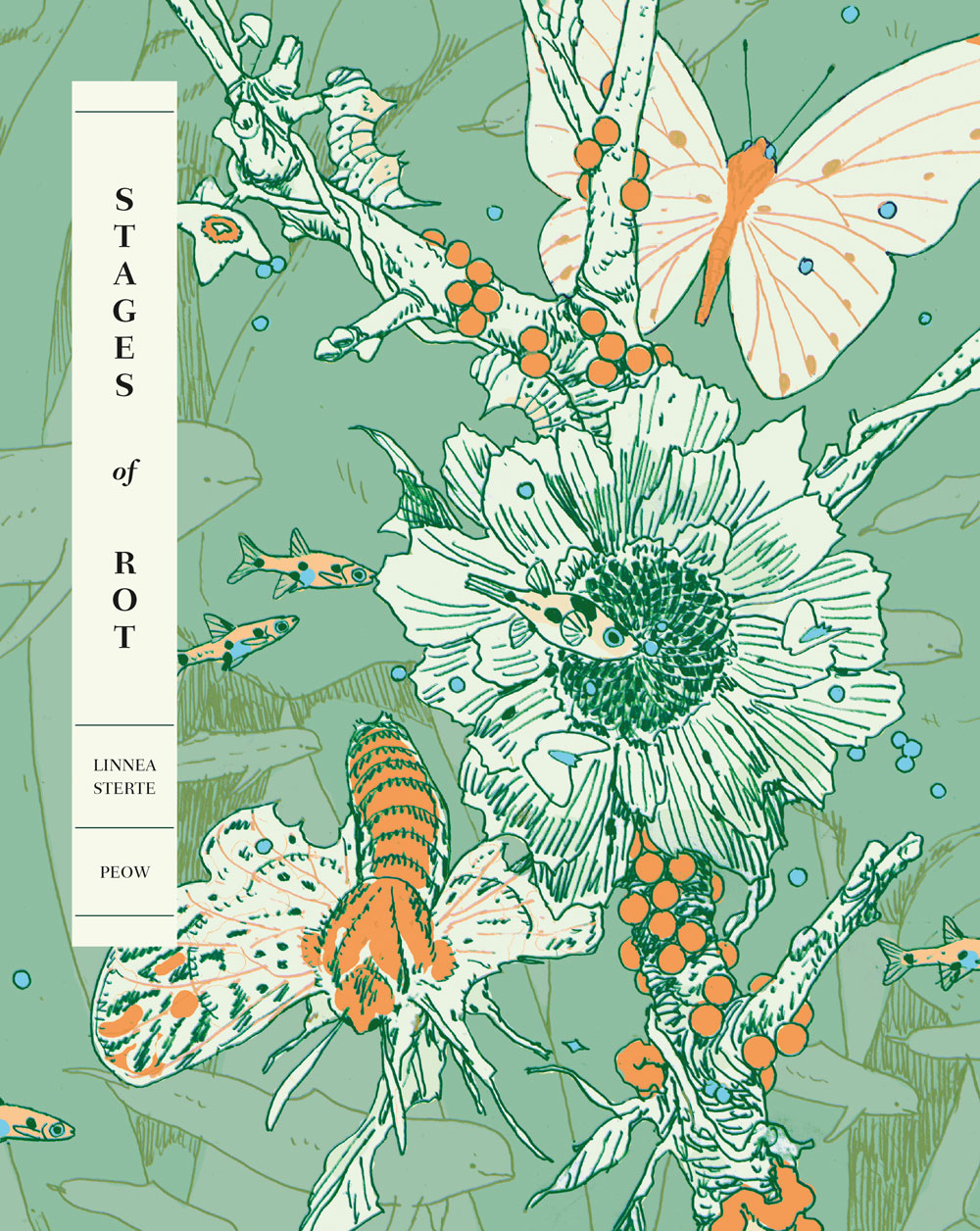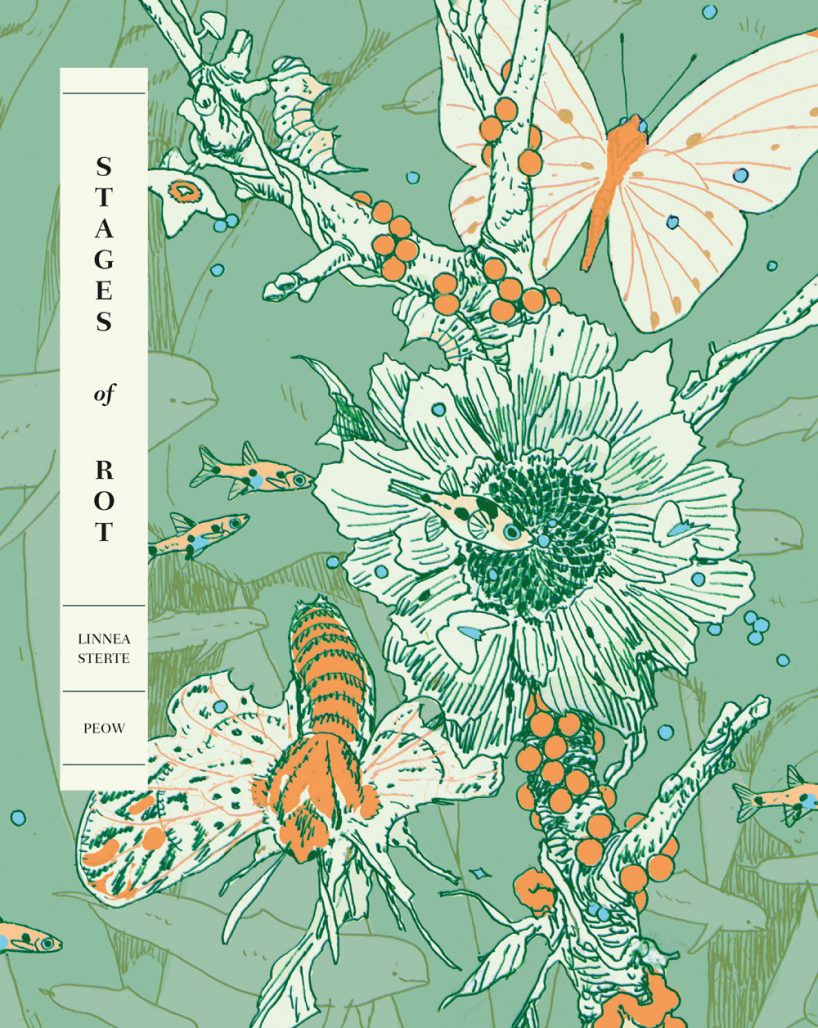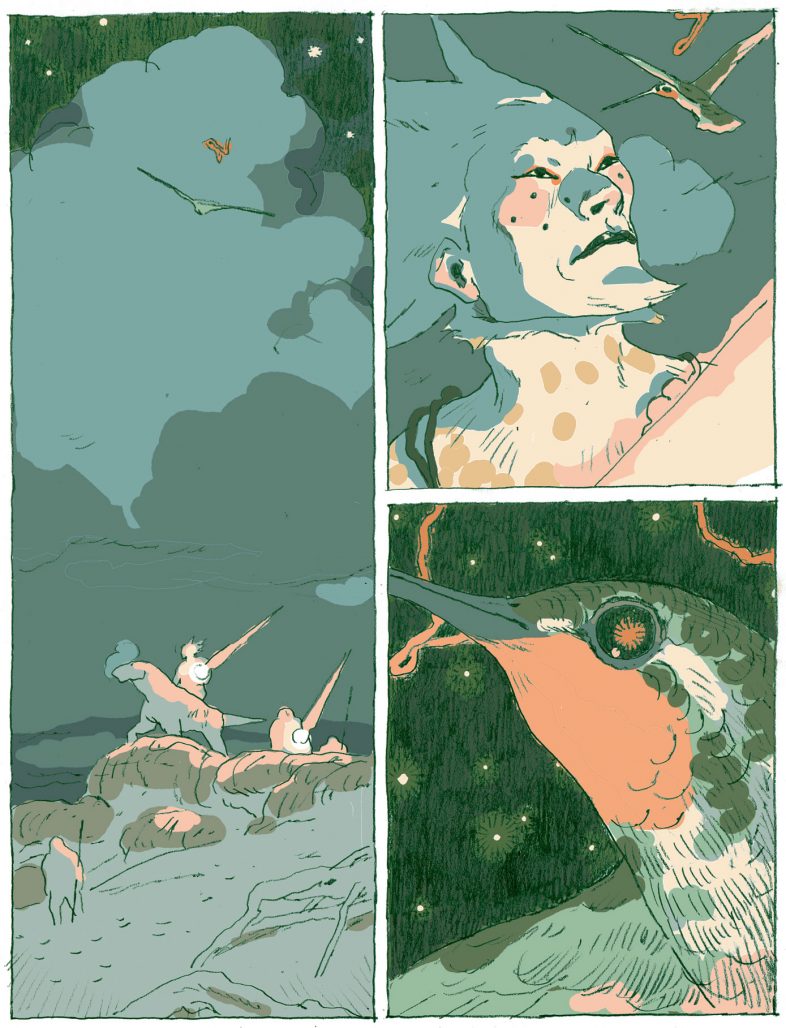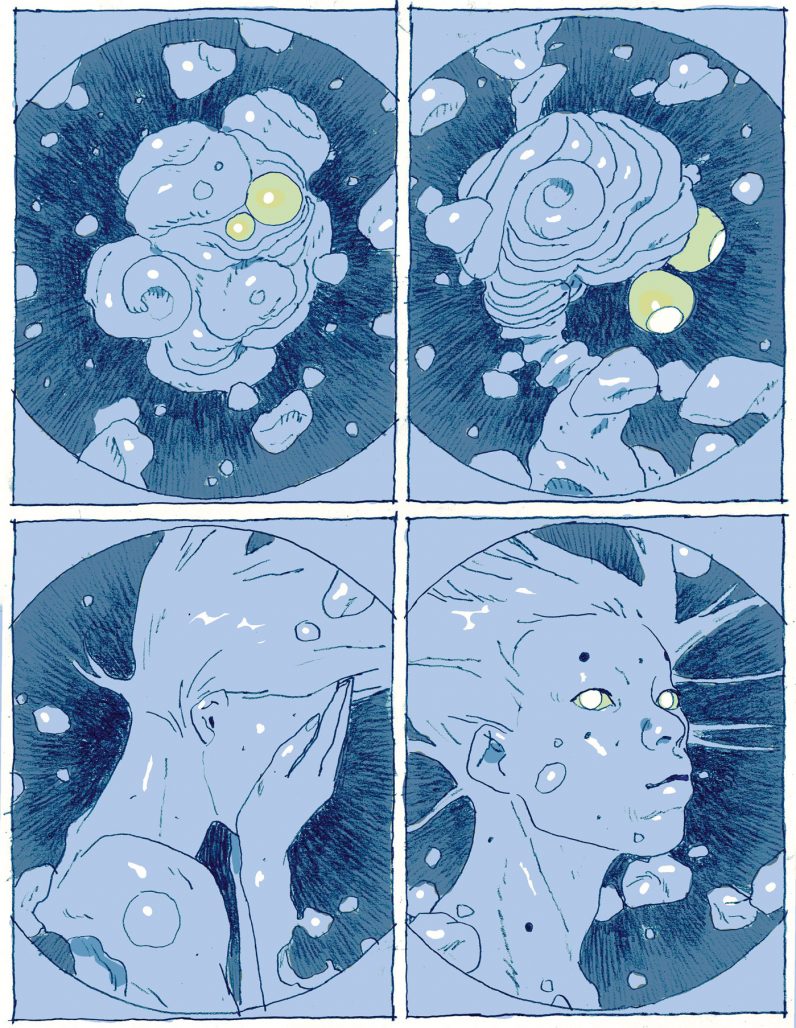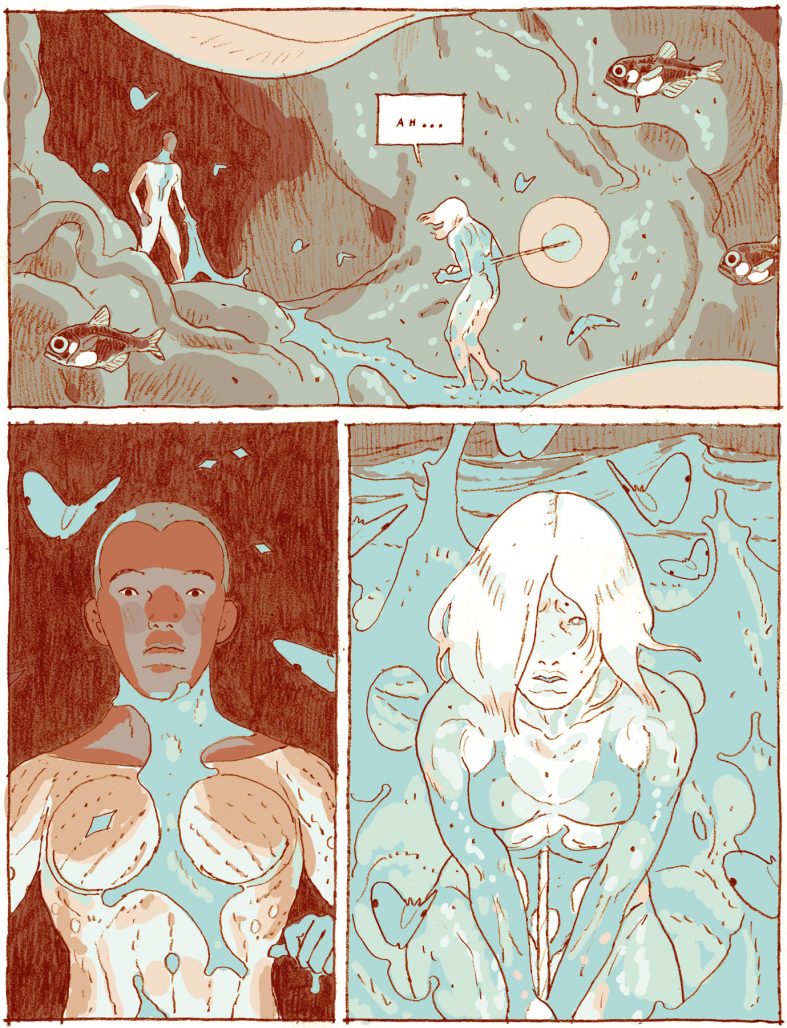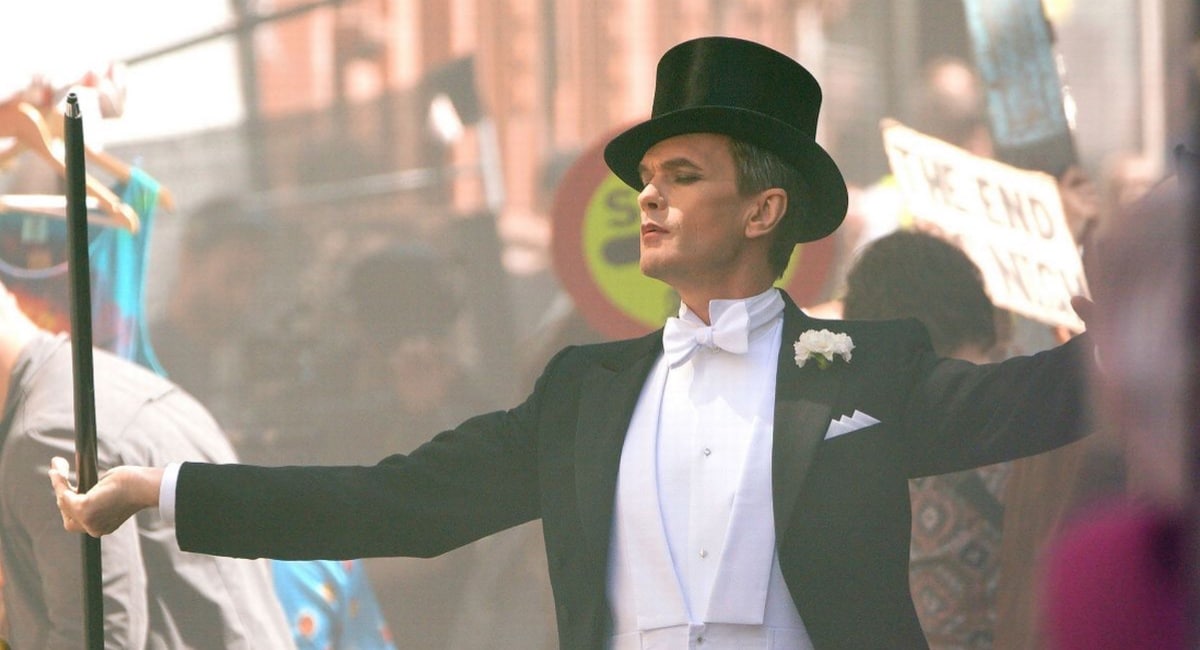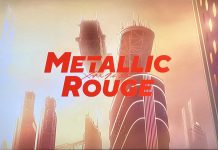Stages of Rot effortlessly stands with some the best science fiction graphic novels of the decade. It creates a fully realized world just odd enough for us to feel destabilized, yet familiar enough to understand it. It’s about how tragedy creates opportunity, how change is the only constant in this world and it’s about how the cycle of life works, sometimes in mysterious ways, but always with a purpose. It’s a mostly wordless exploration of growth, decay, evolution and divine occurrences all beautifully illustrated by Linnea Sterte. Were it not for Maggie Umber’s Sound of Snow Falling, this would be my favourite graphic novel of the year.
Stages of Rot take place on an alien planet in a desert. The inhabitants of the planet spot a whale floating in the sky nearby and go on a hunt. As they slay the beast, they take its most prized possession, it’s heart and pilot and leave it there. As decades, centuries and millenniums passes, the whale decompose and it’s bacterias and organisms begin spreading and evolving around the slain beast. Animals, insects and eventually people gather around and civilizations are formed. What struck me with this book was how effortlessly Sterte manages to create this sense of evolution, how she move through time to show the decay and rebirth of this world. From microscopic elements to the larger elements of the world, readers witness the changes in the world. There’s a fantastic sense of wonderment in seeing the alien fauna roaming the planet. It helps to anchor the evolution caused by the whale’s decay in nature.
There’s this wonderful moment in the book where in the far future, scientists are trying to find answers on the way the world came to be the way it is. They haven’t witnessed what we have, even though we don’t know much more about this world than they do. They try to figure it out, but can never find a clear answer. It’s this unknowable mystery that can never be solved, much like our own inscrutable world. This hunger for knowledge will never stop us from trying to figure out the most intriguing questions of all. Why are we here? Where do we come from?
Sterte shows her control of storytelling and visual language. Stages of Rot is a slow and deliberate work. It’s expertly constructed to provide enough details to understand the world and leaving enough so that your imagination fills in the gaps. It’s almost world building by omission. For instance, we know the hunters who killed the whale did so for a purpose, but we never truly learn what it was or see the aftermath of that. The elements are familiar, hunters are slaying an animal, the specifics are new and foreign, but we understand the ideas brought forward. Sterte focuses on specific elements and that works particularly well to make her world feel truly otherworldly.
The choice of colour is really inspired, the shades of green work well to showcase the rot and the red/orange complement the rest of the page nicely. It’s really helped by the wonderful light beige paper on which the book is printed as it add a lot of depth in the colours. The book itself is also quite nice. I’m always a fan of French Flap (or gatefold?) so I was happy to see them on this book design. This is another example of Peow Studios commitment to making appealing physical books. It enhances the reading experience tremendously and allows the comic to feel like the work of art it truly is.
Stages of Rot is a wonderful book in that it asks those questions and lets the readers explore its themes and its world. I didn’t know Sterte’s work before this graphic novel and now I want to read everything she’s done. I figure I won’t be the only one with this opinion once you’ve read the book. It’s one of the year’s best graphic novels I’ve read so far.
—
Stages of Rot
Linnea Sterte
Peow Studios, 2017
260 SEK ($30 USD)


